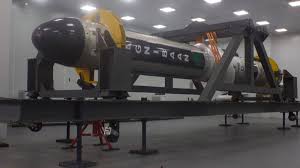Agnikul Cosmos Makes History with World’s First 3D Printed Rocket Engine Launch

Agnikul Cosmos, an innovative space startup incubated at IIT Madras, achieved a groundbreaking milestone by launching the world’s first rocket with a single-piece 3D printed engine. The launch took place from Sriharikota at 7:15 am on Thursday. This achievement, realized through entirely indigenous design and development, marks a significant advancement in India’s burgeoning private space sector.
The Launch
This Chennai-based startup successfully conducted a sub-orbital test flight of its 3D-printed semi-cryogenic rocket, Agnibaan. The launch, executed from its dedicated launch pad at Sriharikota, positions Agnikul Cosmos as the second private company in India to reach such a milestone. Skyroot Aerospace was the first, having launched the Vikram S in November 2022.
Overcoming Challenges
Despite facing multiple failed attempts previously, the successful test flight was conducted discreetly, without live streaming and with fewer dignitaries present at the ISRO’s Satish Dhawan Space Centre launch pad. ISRO acknowledged this achievement on X (formerly Twitter), congratulating Agnikul Cosmos on the successful launch of the Agnibaan SubOrbital Technological Demonstrator (SoRTed-01) mission, highlighting it as the first controlled flight of a semi-cryogenic liquid engine made using 3D printing.
Understanding Sub-Orbital Flights
Girish Linganna, a space expert, explained, “Sub-orbital flights reach space, typically above 100 kilometers, but do not complete an orbit around Earth. The vehicle ascends to space and then returns without circling the planet.” This test serves as a precursor to the Agnibaan launch, which is a two-stage launch vehicle designed to be highly customizable and capable of carrying a 300 kg payload to a 700 km orbit.
The Agnilet Engine
Girish Linganna, a space expert, explained, “Sub-orbital flights reach space, typically above 100 kilometers, but do not complete an orbit around Earth. The vehicle ascends to space and then returns without circling the planet.” This test serves as a precursor to the Agnibaan launch, which is a two-stage launch vehicle designed to be highly customizable and capable of carrying a 300 kg payload to a 700 km orbit.
Advantages of Semi-Cryogenic Engines
Semi-cryogenic engines use liquid oxygen and regular fuel, such as kerosene or ATF, whereas cryogenic engines use both liquid oxygen and liquid hydrogen. The main difference lies in the temperature and complexity of the fuels. Semi-cryogenic engines are simpler and cheaper to handle and store compared to cryogenic engines. Linganna noted, “Cryogenic engines provide higher specific impulse, making them more efficient for long-distance missions or heavier payloads. Semi-cryogenic engines are cost-effective and simpler to manage, often used in the initial stages of a rocket.”
Advanced Technology Integration
Agnikul Cosmos has also introduced advanced technology with the first-ever Ethernet-based avionics system and autopilot software developed in-house. Ethernet technology, commonly used for network communications, is utilized here to connect and control various onboard systems, enhancing reliability and efficiency.
Recognition
The Department of Space and ISRO congratulated Agnikul Cosmos on the successful launch, recognizing the technological advancements demonstrated, including the 3D-printed semi-cryogenic engine and flight control systems. ISRO Chairman S Somanath remarked, “This success motivates ISRO to support space startups and non-governmental entities, fostering innovation and self-reliance to create a vibrant space ecosystem in India.”
Reflections from Agnikul Cosmos
Srinath Ravichandran, co-founder and CEO of Agnikul Cosmos, expressed pride in the team’s hard work and dedication, highlighting the extensive support from IN-SPACe and ISRO. He said, “We are blessed to have had the opportunity and the full support to design and build original space-worthy hardware in India.”
Industry Impact
Pawan Goenka, chairman of IN-SPACe, praised Agnikul Cosmos’s efforts, emphasizing the significant role private players now play in India’s space sector. He remarked, “The power of young innovators and entrepreneurs, leading with cutting-edge technology like the world’s first 3D-printed semi-cryogenic engine, is driving the transformation of India’s space sector. At IN-SPACe, we are committed to supporting these pioneers as they propel India to a leadership position in the global space arena.”
The Team Behind the Success
The Agnikul Cosmos team, consisting of over 200 engineers associated with NCCRD at IIT Madras, is guided by 45 former ISRO scientists. Their invaluable expertise is crucial in the endeavor to democratize access to space, making significant strides in India’s space capabilities.
Way Forward
Agnikul Cosmos’s successful launch of the world’s first single-piece 3D printed rocket engine marks a new era in space technology and innovation. This achievement not only showcases India’s growing capabilities in the private space sector but also highlights the potential for future advancements driven by indigenous design and development. With continued support from ISRO and IN-SPACe, Agnikul Cosmos is set to make further contributions to India’s position in the global space industry.









